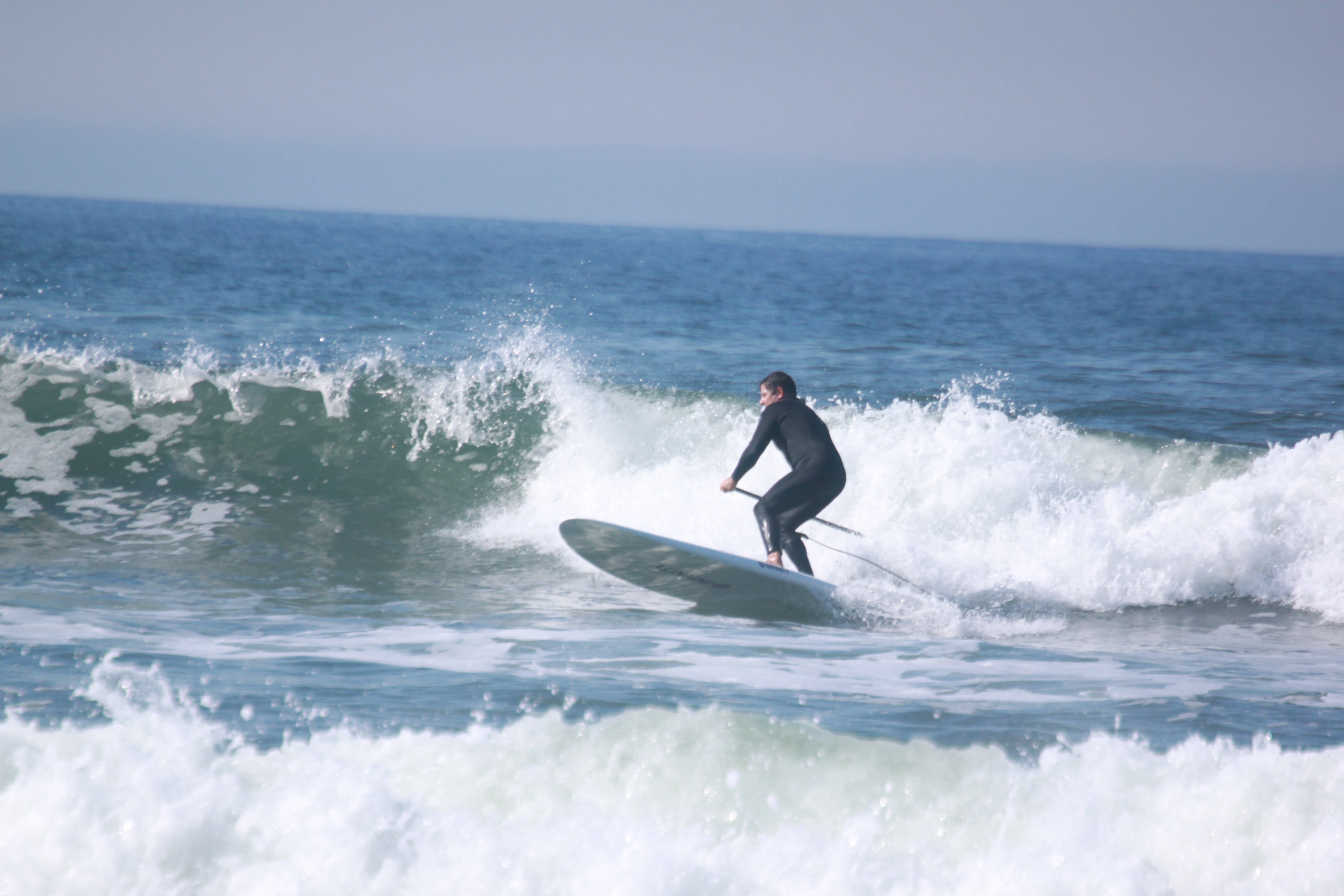SUP Surf Guide Winter Edition
5 Tips to get out surfing




With another Summer in the books and Fall setting in quickly many paddlers start asking "What do we do during Winter?" The answer is SUP surfing! In Northern California, Winter is the best season to get into SUP surfing!
Why surf in Winter?
Better Waves: Waves are created from storms way out in the Ocean. In winter time the storms come from the North Pacific (which is closer to us than summer storms from the Tropics). The "ripples" or swells dissipate less over the shorter distance resulting in cleaner waves on our shores. This is great for beginners and advanced riders as the waves are much easier to catch and the rides are much longer regardless of whether you're on a 3ft or 10ft wave.
Less crowds: The beach go-ers tend to disperse once the weather gets a little colder. This makes it easier to score good parking and means the wave will be less crowded too!
Mild conditions: Relatively speaking, Winters on the Pacific Coast are pretty mild compared to places where it snows regularly like the East coast or Europe. The ocean's temp rarely gets below 50 and air temps on the coast average 60 in winter. With the proper gear it's super manageable!
How to get started!
1) Get your Wetsuit Now: Wetsuits are very hard to come by right now due to the supply chain issues manufacturers are still facing. The colder it gets the faster they sell... it's best to get a suit before you really need it. For Winter, most people are fine with 4/3 full suit. If you tend to get cold easily, a 5/4 wetsuit or a rashguard layer underneath will help keep you warm during your sessions.
2) Join our Group Class: If you are brand new to surfing in general or are looking to learn SUP surfing, sign up for our Intro to SUP Surfing class (level 4). We teach the basics on how to paddle out and navigate a surf break. We also go over "surfing etiquette" so you can avoid making common mistakes out in the line up. Our intro to SUP Surf Level 4 class is also a great opportunity to try out some SUP Surf Boards.
3) Learn about Surf Conditions: Check out websites like Surfline or Magicseaweed and read about local conditions. Watch live cams so you can associate what 2ft-3ft looks like vs 6ft-8ft. Being able to see or tell the differences will help you understand and plan around your comfort level.
4) Get a Second paddle: Sup surf boards tend to be much thinner than Touring or Race boards which means you don't need as much length to get the blade fully in the water. Plus, surf paddling is all about getting speed quickly, which requires a different blade shape than if you are paddling long distances. We have a nice selection of Surf paddles that you can come check out anytime!
5) Look into a dedicated SUP Surf Board: If you want to take the plunge 100% into SUP surfing, getting a board, specifically shaped for SUP surfing, will make it much easier to perform turns and catch more waves (without wiping out). We recommend Infinity and King's Paddle as they are both California based shapers that make boards designed for our ocean conditions.
